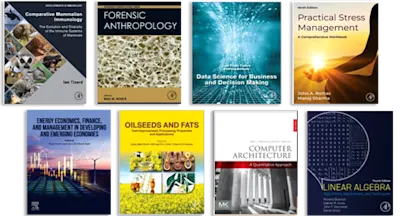
Textbook of Physical Diagnosis with DVD
History and Examination With STUDENT CONSULT Online Access
- 6th Edition - July 20, 2015
- Imprint: Saunders
- Author: Mark H. Swartz
- Language: English
- eBook ISBN:9 7 8 - 0 - 3 2 3 - 3 1 5 2 7 - 2
- eBook ISBN:9 7 8 - 1 - 4 5 5 7 - 2 6 4 8 - 6
Despite the advanced technologies at our disposal today, a complete health history and physical examination remain the most crucial diagnostic tools in any healthcare… Read more
Purchase options

Despite the advanced technologies at our disposal today, a complete health history and physical examination remain the most crucial diagnostic tools in any healthcare practitioner's arsenal. And no one teaches these all-important skills better than Mark H. Swartz, MD, FACP. For nearly two decades, Dr. Swartz's textbook has shown readers how to derive the maximum diagnostic information from interviewing and examining patients. Using a compassionate, humanistic approach, Dr. Swartz explores how cultural differences can influence communication, diet, family relationships, and health practices and beliefs, and demonstrates that your interpersonal awareness is just as essential in physical diagnosis as your level of technical skill. In this 6th Edition, a new chapter on the focused physical exam prepares you for the USMLE Step 2 CS and the OSCE. Over 3 hours of video on DVD demonstrate how to examine adult male and female patients as well as pediatric and geriatric patients. Plus you can access the complete contents of the book online at www.studentconsult.com.
- Discussions of special considerations emphasize cultural differences that may affect your approach to patients ... guide you through assessment of nutritional status ... and inform you of things to look for and remember when examining children, pregnant women, older patients, and acutely ill patients.
- Pathophysiology explanations help you understand the causes of the symptoms you encounter.
- Abundant color photographs capture the real appearance of various diseases.
- Coverage of complementary and alternative medicine alerts you to the clinical implications of these increasingly popular modalities.
- An appendix on examination of the Spanish-speaking patient provides translations for commonly used medical phrases and questions is available on www.studentconsult.com
Medical students preparing for OSCEs or USMLE Step 2 CS; Health-care students; Students in Clerkship/Resident Years
Section I The Art of Interviewing
Chapter 1 The Interviewer’s Questions
Chapter 2 The Patient’s Responses
Chapter 3 Caring for Patients in a Culturally Diverse Society
Chapter 4 Understanding Complementary and Alternative Medicine
Chapter 5 Assessment of Nutritional Status
Chapter 6 Putting the History Together
Section II The Science of the Physical Examination
Chapter 7 The Physical Examination
Chapter 8 The Skin
Chapter 9 The Head and Neck
Chapter 10 The Eye
Chapter 11 The Ear and Nose
Chapter 12 The Oral Cavity and Pharynx
Chapter 13 The Chest
Chapter 14 The Heart
Chapter 15 The Peripheral Vascular System
Chapter 16 The Breast
Chapter 17 The Abdomen
Chapter 18 Male Genitalia and Hernias
Chapter 19 Female Genitalia
Chapter 20 The Musculoskeletal System
Chapter 21 The Nervous System
Chapter 22 Putting the Examination Together
Section III Evaluation of Specific Patients
Chapter 23 The Pregnant Patient
Chapter 24 The Pediatric Patient
Chapter 25 The Geriatric Patient
Chapter 26 The Acutely Ill Patient
Section IV Putting the Data to Work
Chapter 27 Diagnostic Reasoning in Physical Diagnosis
Chapter 28 The Clinical Record
Chapter 29 Focusing on the Focused History and Physical Examination
Epilogue
Appendix A Commonly Abused Drugs
Appendix B Signs and Symptoms in Deficiency States
Appendix C Conversion Tables
Chapter 1 The Interviewer’s Questions
Chapter 2 The Patient’s Responses
Chapter 3 Caring for Patients in a Culturally Diverse Society
Chapter 4 Understanding Complementary and Alternative Medicine
Chapter 5 Assessment of Nutritional Status
Chapter 6 Putting the History Together
Section II The Science of the Physical Examination
Chapter 7 The Physical Examination
Chapter 8 The Skin
Chapter 9 The Head and Neck
Chapter 10 The Eye
Chapter 11 The Ear and Nose
Chapter 12 The Oral Cavity and Pharynx
Chapter 13 The Chest
Chapter 14 The Heart
Chapter 15 The Peripheral Vascular System
Chapter 16 The Breast
Chapter 17 The Abdomen
Chapter 18 Male Genitalia and Hernias
Chapter 19 Female Genitalia
Chapter 20 The Musculoskeletal System
Chapter 21 The Nervous System
Chapter 22 Putting the Examination Together
Section III Evaluation of Specific Patients
Chapter 23 The Pregnant Patient
Chapter 24 The Pediatric Patient
Chapter 25 The Geriatric Patient
Chapter 26 The Acutely Ill Patient
Section IV Putting the Data to Work
Chapter 27 Diagnostic Reasoning in Physical Diagnosis
Chapter 28 The Clinical Record
Chapter 29 Focusing on the Focused History and Physical Examination
Epilogue
Appendix A Commonly Abused Drugs
Appendix B Signs and Symptoms in Deficiency States
Appendix C Conversion Tables
- Edition: 6
- Published: July 20, 2015
- Imprint: Saunders
- Language: English
MS
Mark H. Swartz
Mark H. Swartz is Professor of Medicine at State University of New York (SUNY), Downstate College of Medicine, Brooklyn, New York; Adjunct Professor of Medicine, New York Medical College, Valhalla, New York; Professor of Medical Sciences, New York College of Podiatric Medicine, New York, New York; Director, C3NY--Clinical Competence Center of New York, New York, New York.
Affiliations and expertise
Professor of Medicine, State University of New York (SUNY), Downstate College of Medicine, Brooklyn, New York; Adjunct Professor of Medicine, New York Medical College, Valhalla, New York; Professor of Medical Sciences, New York College of Podiatric Medicine, New York, New York; Director, C3NY--Clinical Competence Center of New York, New York, NY, USA